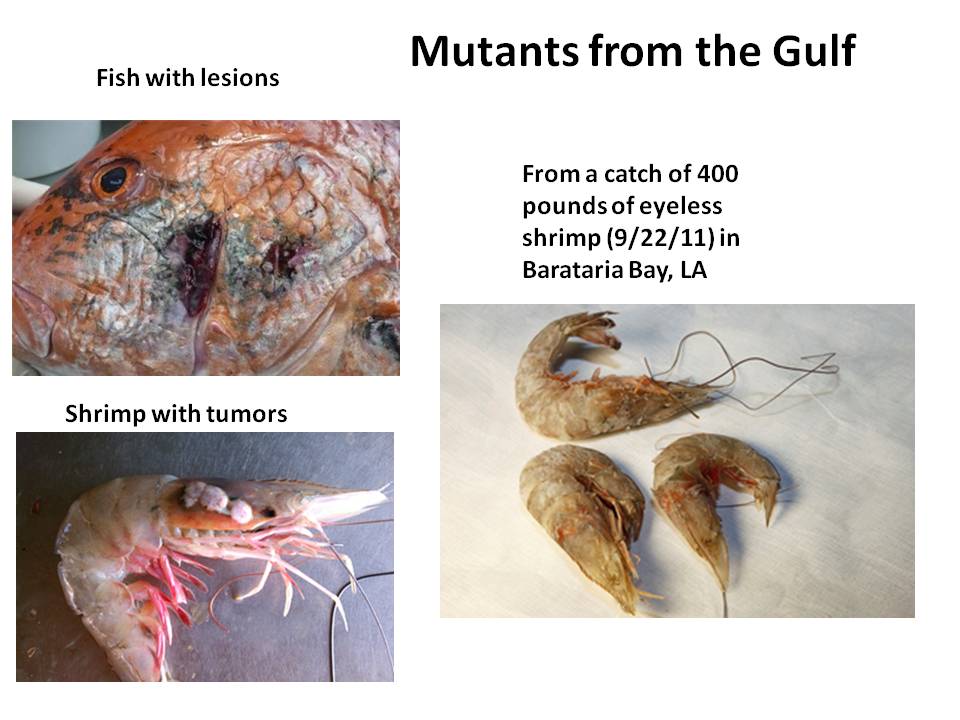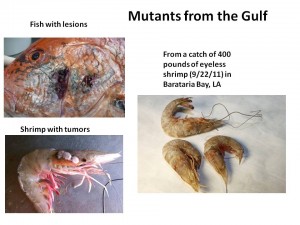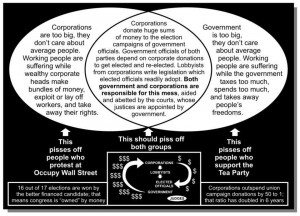By OcJim
It’s been over two years since BP befouled a large portion of the Gulf Coast with over 210 million gallons of crude oil (25 times the Exxon Valdez spill), with 500,000 tons of natural gas, applied some 2 million gallons of Corexit, and performed about 410 “controlled burns” of the oil on the surface of the water.
But its toxic effects must be over now. Right? We have heard nothing in national news about the BP contamination. In fact less than a year after the spill, it is business as usual for BP. Even with the $20 billion payment fund for victims of the spill, it announced a profit increase of 17%, $7.1 billion the first quarter of 2011, $25 billion for the entire year, and another $5 billion for the first quarter of 2012.
As of a few days ago, BP declared that most Gulf oil spill victims should not get any more payouts – the welfare word “payouts” is theirs – for future losses because the hardest-hit areas are recovering and the economy is growing. It further claims that the fund administrator, Ken Feinberg’s formula for determining final payments artificially inflates future expected losses.
Small Sample of Victims
| Names | Town | Location | Illnesses after 2 yrs | Economic Loss | Compensation from BP |
| Nicole Maurer,Wm. Maurer,And daughters, Brooklyn & Elizabeth | Buras, LA | W. Bank of Mississippi River. Gulf is less than 1 mile West | Eliz: rashes, allergies, sore throatWm: vomiting, diarrhea, cough, bleeding from earsBrooklyn: now chronic asthma & recurrent infections | Wm fishing income gone | Little or none |
| Chas Taylor | Bay St Louis, Mississippi | On the Gulf | Repeated pneumonia, bloody diarrhea | Lost job of 10 years due to failing health | Little or none |
| Steve Kolian | Memory loss, bleeding from orifices, nausea, dizziness | Dives in Gulf to study spill – illness curtailed work | Little or none | ||
| Scott Porter | Persistent dermatitis | Diver | Little or none | ||
| Keith Langner | South Walton, Florida | NW Florida Gulf Coast | Multi-infarct dementia, life expectancy 5 yrs | Cleaning and caring for beaches – can’t work | Little or none |
| Kindra & George Arnesen and 3 children | Venice, LA | Near Buras above | Debilitating health effects | Can afford to move | Little or none |
What do victims say? That is quite another story. Let the devastating illnesses speak for themselves, as the table above gives a very small, but representative, sample.
Are they all being helped? The $20 billion being disbursed by Ken Feinberg covers about 90,000 qualified cleanup workers and 110,000 coastal residents living within one-half to one mile of the coast (out of a coastal population of 21 million). It excludes coverage for mental health and a number of physical ailments, including cancers, birth defects, developmental disorders and neurological disorders, including dementia.
The coverage includes health monitoring but not healthcare. Those who sue must prove causality to receive a settlement, if accepted nullifies punitive damages or further suits. Also excluded are some 194,000 individuals and businesses who accepted one-time final payments from Gulf Coast Claims Facility (GCCF), established by BP. Ninety-five thousand victims, unable to wait out payments, took a minimum of $5,000 each, and forty-five thousand took $15,000.
Government studies have been slow arriving and cursory, including the EPA, National Institute of Environmental Health Sciences (NIEHS), The Center for Disease Control and Government Accountability Project – to name some that are involved. Helpful data acquired is often suppressed, often lost to litigation payment, requiring nondisclosure.
The American Journal of Disaster Medicine reported the same chronic adverse health effects of the Exxon Valdez spill were being seen among Gulf victims, including cancers, liver and kidney disease, mental health disorders, birth defects and developmental disorders.
Crude oil contains polycyclic aromatic hydrocarbons (PAHs), a group of over 100 chemicals highly toxic and which persist in the environment for long periods. They target the skin, eyes, ears, nose, throat and lungs. Corexit, a chemical dispersant (declared by BP to be “as safe as Dawn dishwashing soap”), contains a toxic solvent that can injure red blood cells, the kidneys and the liver. Gulf residents and cleanup workers complained of breathing problems, coughing, memory loss, etc – all known symptoms of exposure to Corexit.
Consuming more seafood, Gulf residents are at greater risk from seafood exposed to oil and Corexit. Areas of most concern are developmental issues for fetuses and children, as well as cellular toxicity and cancer. Visual proof of the spill’s continuing toxicity is above. Pictures of horribly mutated shrimp, fish with oozing sores, eyeless crabs and shrimp, and underdeveloped blue crabs are available on the internet.
Regular protests to raise awareness of the health crisis are still being held. A group, Gulf Change, last hosted a “funeral for the Gulf” with a procession from BP’s downtown New Orleans office to Judge Carl Barbier’s courthouse, who is hearing suits against BP.
Most Americans are too far removed and uninformed to notice.
____________________________________________________________________________________________________
Follow more from this author here —> Common Good
Gross Negligence: BP Mutations ,





Pingback: Children Benefit From School-Based Mental Health Support?